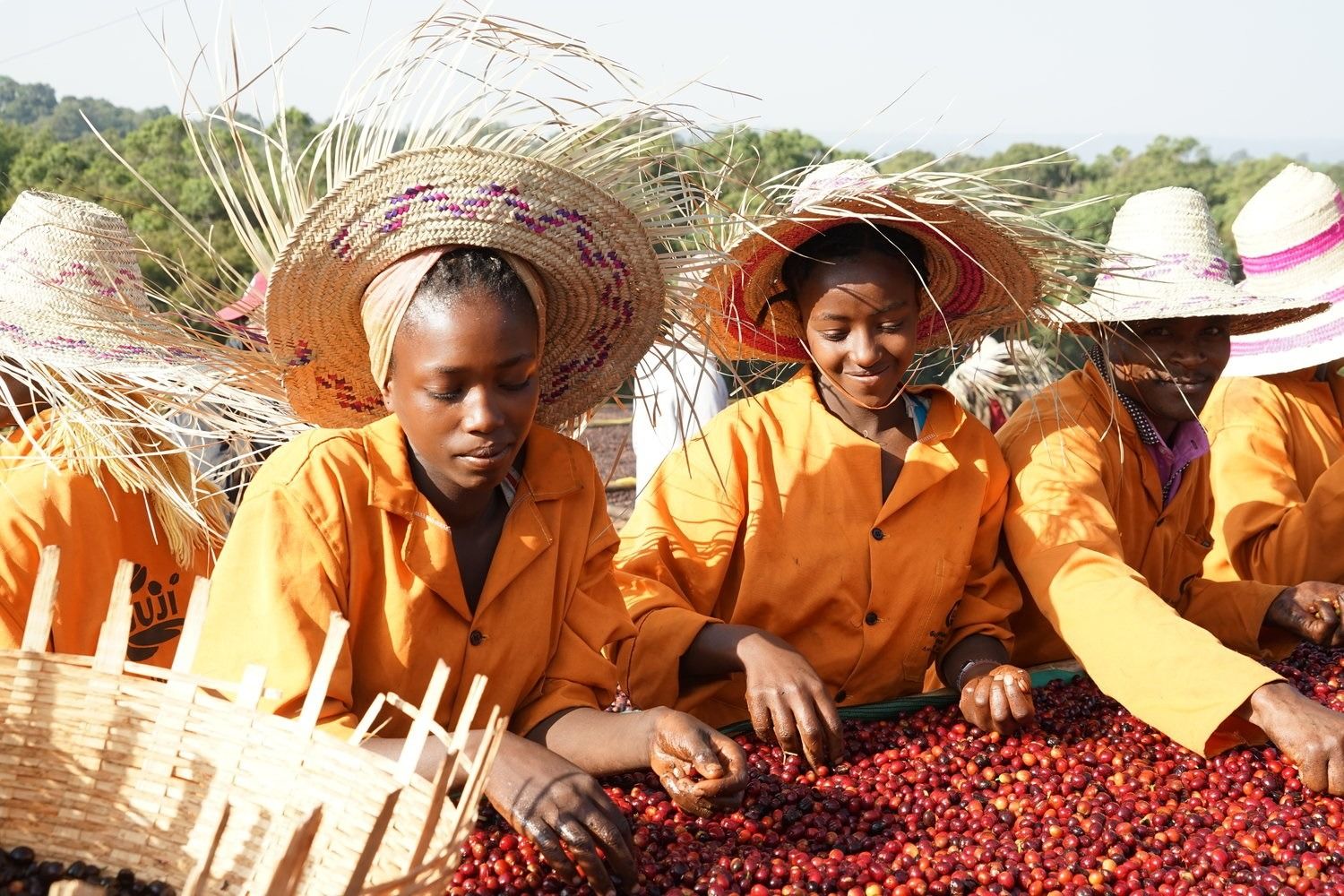Did you know that Ethiopian coffee has a sweet taste, aroma and light to medium weight?
Did you know that Ethiopian coffee has a sweet taste, aroma and light to medium weight?

Before we get to know coffee,
let’s get to know Ethiopia first. Ethiopia is a country in East Africa, located in the interior of the Horn of Africa. It is bordered by Eritrea to the north, Sudan and South Sudan to the west, Djibouti and Somalia to the east, and Kenya to the south.
The country is characterized by the presence of a subequatorial climate, which is characterized by extremely high temperatures and pronounced seasonality of precipitation.
In the lower parts of the country, the weather is very hot all year round. In the higher parts, the climatic conditions are significantly different and are much more pleasant.
Generally, Ethiopian coffee is distinguished by its sweet taste and aroma and with a light to medium mass.
It is harvested at an altitude of 1500 m to 2200 m mainly in small plantations.
Harvesting of coffee beans begins in November and ends in February.
In the southern part of the country is grown mainly coffee from Sidamo (Sidama), characterized by its rich taste and bright coating. Sidamo’s green coffee beans are often cheaper than Sidamo’s Yirgacheffe but have a better value in terms of price-quality. Harrar coffee is produced in the eastern region of Ethiopia, with fruit or wine notes, blueberries, bright acidity and a medium to heavy body.
Harrar coffees are hand-processed by locals.
In the western region of Ethiopia, the coffee produced is of the Ghimbi variety, characterized by its rich, pungent acidity and complexity of flavours and aromas.

The main regions for coffee production and cultivation in Ethiopia are:
Yirgacheffes, Sidamo, Harrar, Bebeka, Teppi, Limu, Djimma, Illubabor, Lekempti, Wellega and Gimbi.
The three largest regions for coffee production are Ethiopian Yirgacheffe, Ethiopian Sidamo and Ethiopian Harrar.
The southern Gedeo area of Ethiopia is famous for its wet (washed) coffees.
The coffees are spicy, fragrant and with a delicate body, sweet taste and floral aroma, including brilliant citrus notes with a light to medium body.
The coffee is extracted at an altitude of 1700 m.-2200 m. in the period October-December.
According to the altitude at which Yirgacheffe coffees are extracted, they can be defined as Strictly High Grown (SHG) / Strictly Hard Bean (SHB), where coffee trees grow slowly due to their height, which allows the tree to supply nutrients to coffee and develop the best flavours.
Fine Ethiopian coffee Yirgacheffe is characterized by bright acidity with intense and pure flavours, floral notes in the aroma, and sometimes hints of toasted coconut can be noticed.
Additional notes include chocolate and citrus.
In the aftertaste, hints of berries or wine can be noticed. Due to these qualities, coffee Yirgacheffes are preferred for making cold coffee drinks, incl. and cold brew.
In order for the delicate qualities to stand out and improve the brightness of the coffee, Yirgacheffe coffee beans it is appropriate to be medium baked. Medium-dark or dark roasting results in heavier and sweeter extraction, but some of the qualities of the coffee are lost.
Sidamo is characterized by a rich and full body, sweet and complex taste, low acidity, floral aroma and bright and soft finish.
The plants grow from 15,000 m to 2,200 m above sea level and their harvest covers the period October – January.
The coffees are characterized by a floral and light woody aroma, there are hints of lemon, sugar cane, fruit, there is a medium and smooth body, and the acidity is low to medium.
Sidamo coffees can also be defined as Strictly High Grown (SHG) / Strictly Hard Bean (SHB) similar to Yirgacheffes coffees.
The heavy, spicy and fragrant, Ethiopian Harrar coffee is grown on small farms in the Oromia region of southern Ethiopia at altitudes between 1,400 and 2,000 meters.
The yield covers the period October-February. The coffee has a heavy body, well-defined earthy aroma with hints of mocha and berries (blueberries and blackberries). Harrar coffees can be defined as Strictly High Grown (SHG).
Ethiopian Djimmah coffee is grown in the Illubabor and Kaffa regions at 4,400 to 6,000 feet above sea level. When wet-processed coffee of this type is excellent low acid coffee, and when Djimah is dry processed (unwashed-gives an unwanted aroma).
Limu coffees, grown at 3,600 to 6,200 feet in southwestern Ethiopia, are high-quality wet-processed (washed) coffees characterized by relatively low, albeit slightly acidic, acidity.
The coffee has a well-balanced body with noticeable wines and spicy flavours – pleasantly sweet and lively floral notes.
Ethiopian Ghimbi coffee is a wet-processed (washed) coffee grown in western Ethiopia.
The coffee has a heavier body than the Ethiopian Harrar coffee and is more balanced with a longer-lasting body. Ghimbi is characterized by its complex taste and rich, pungent acidity.
Grown in the Gimbi and Volega regions of Ethiopia at altitudes between 4,900 feet and 5,900 feet above sea level, Lekempti coffee is known for its pleasant acidity and healthy body.
There is a light but distinct and pleasant fruity aroma.
Ethiopian Yirgacheff coffee is suitable for consumption in any form.
It is especially suitable for the preparation of cold extractions, as well as in the form of cappuccino.


Comments are closed.